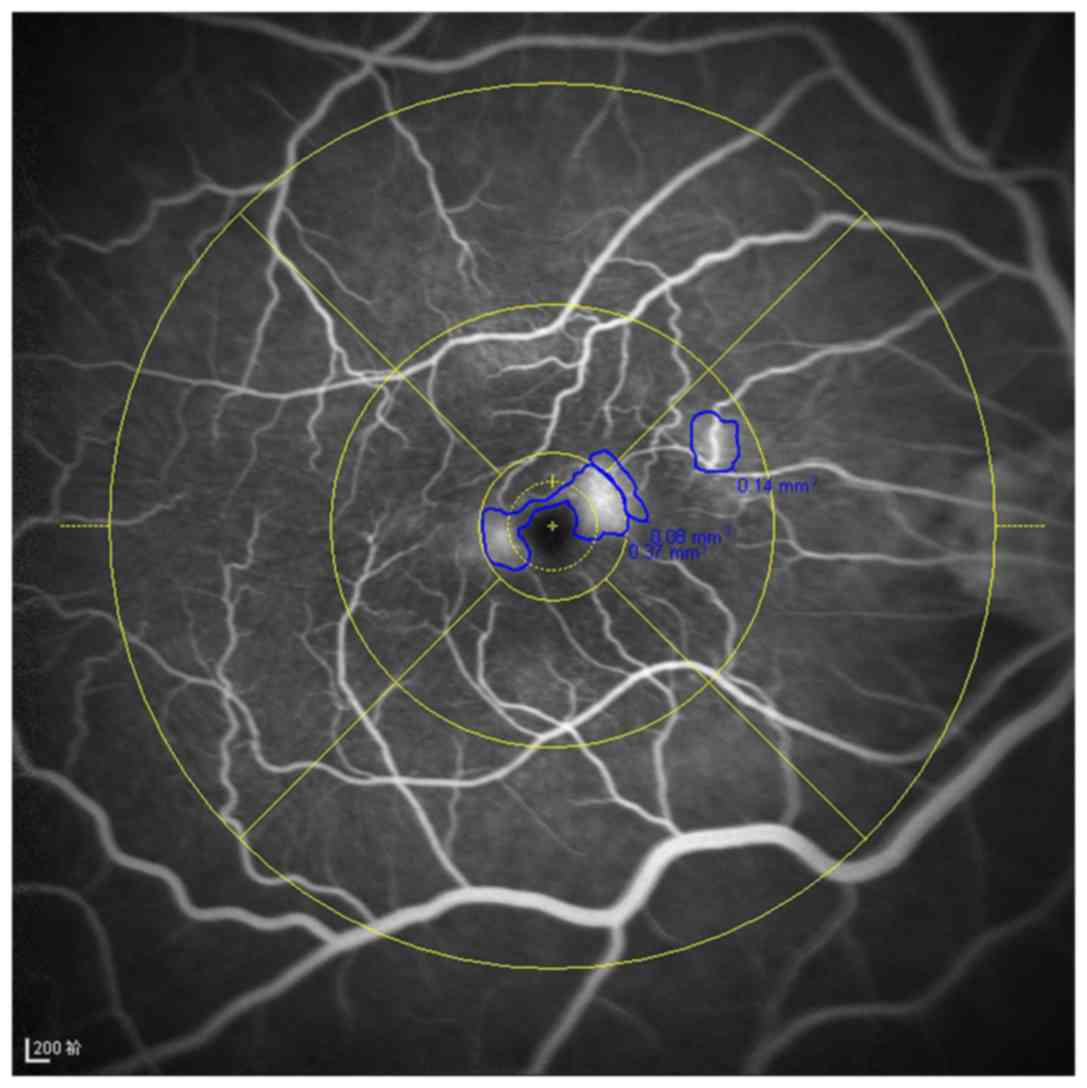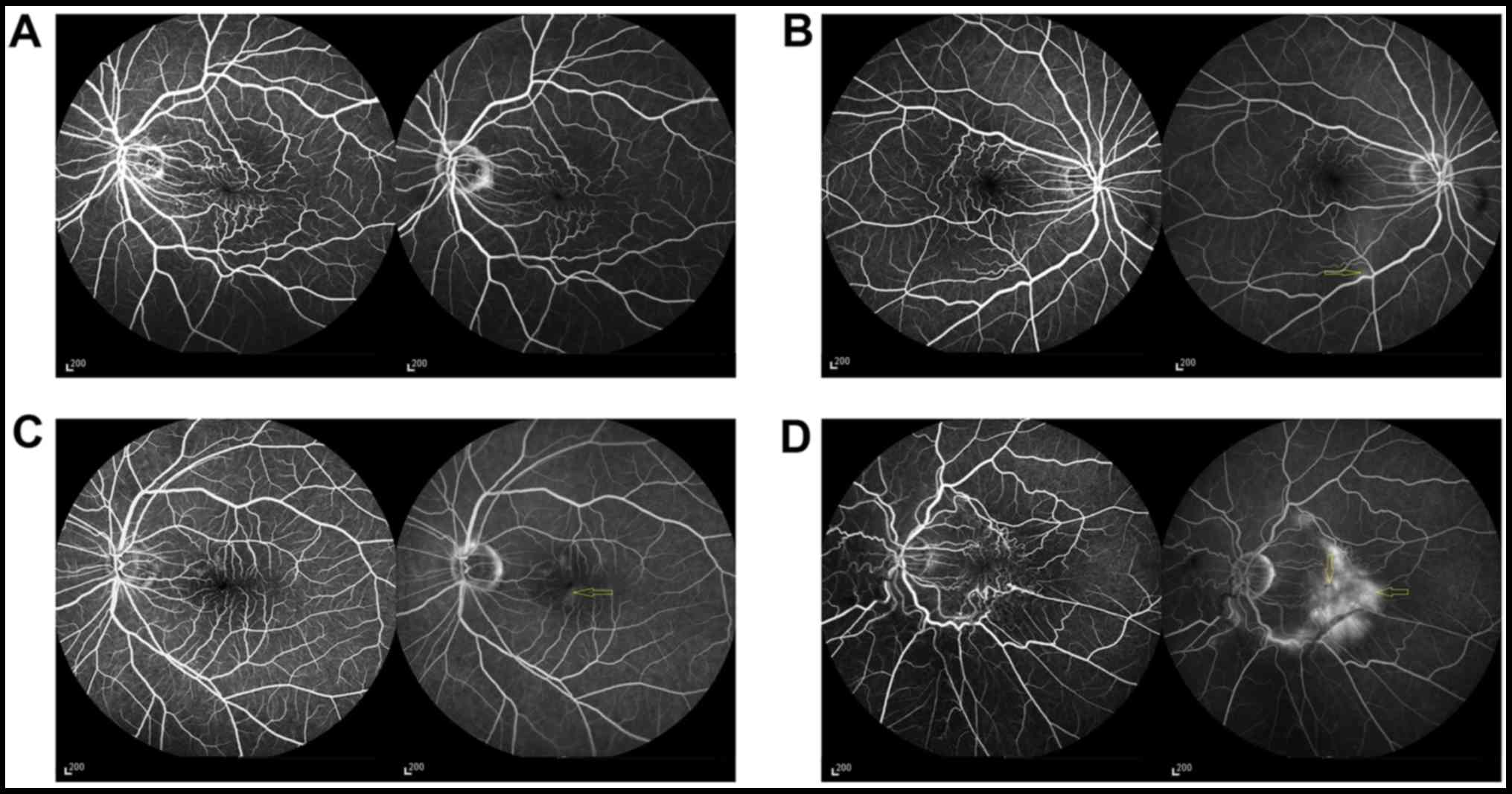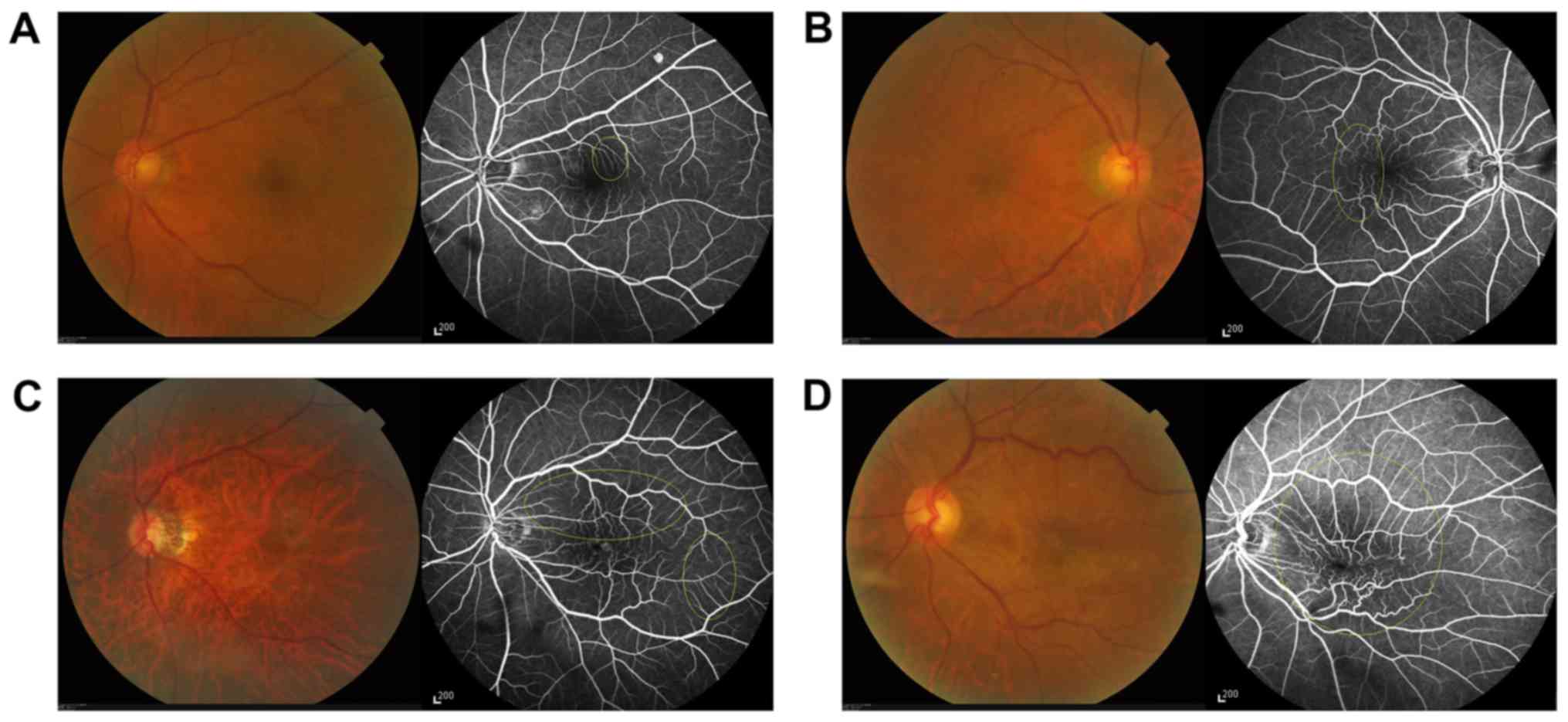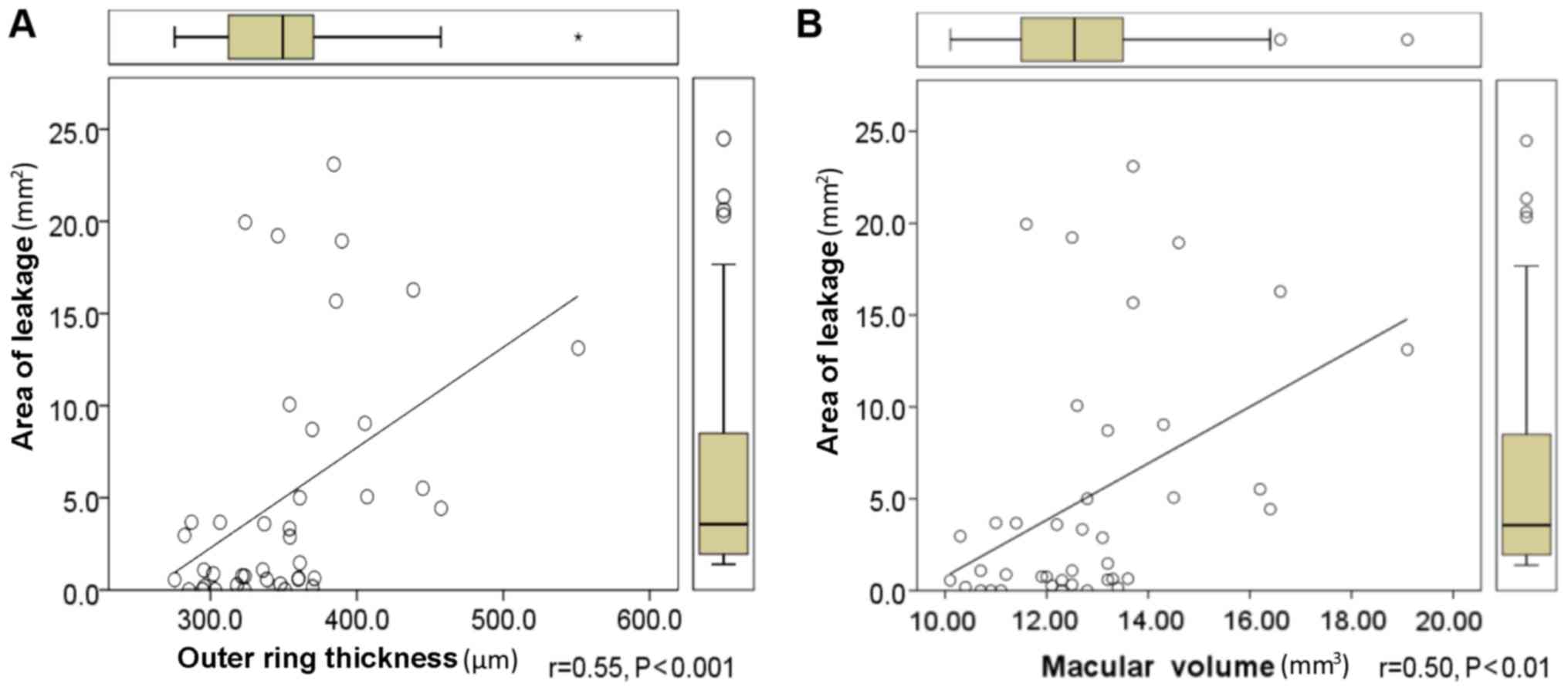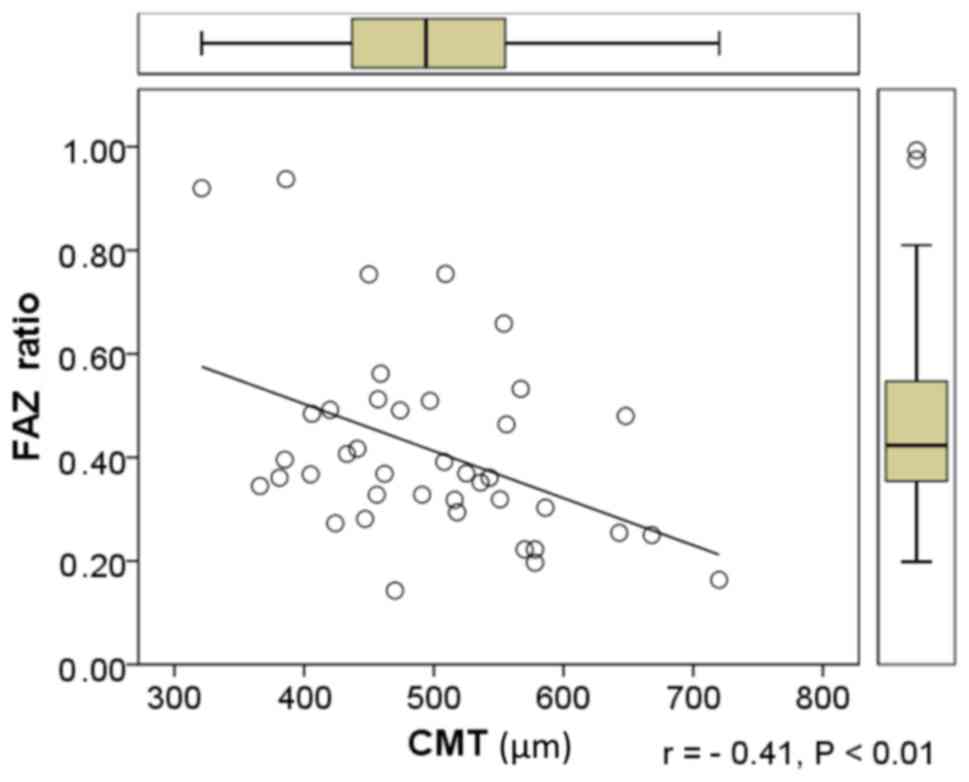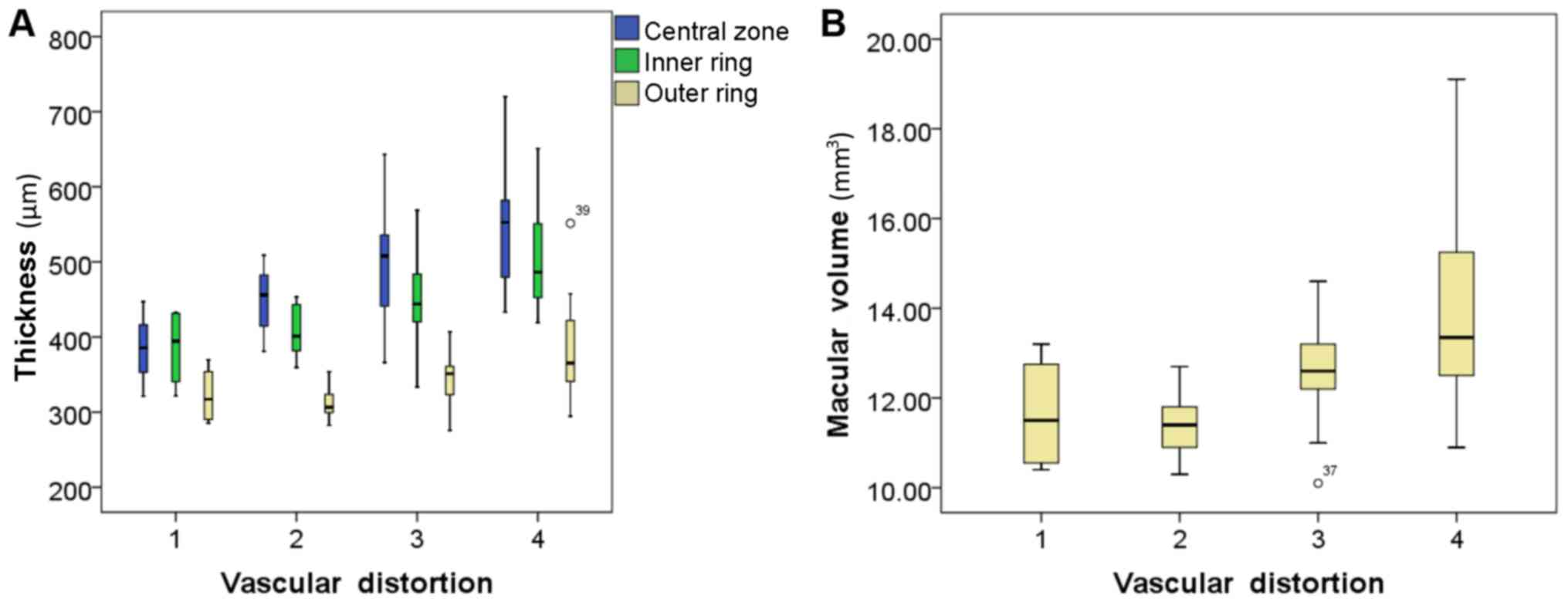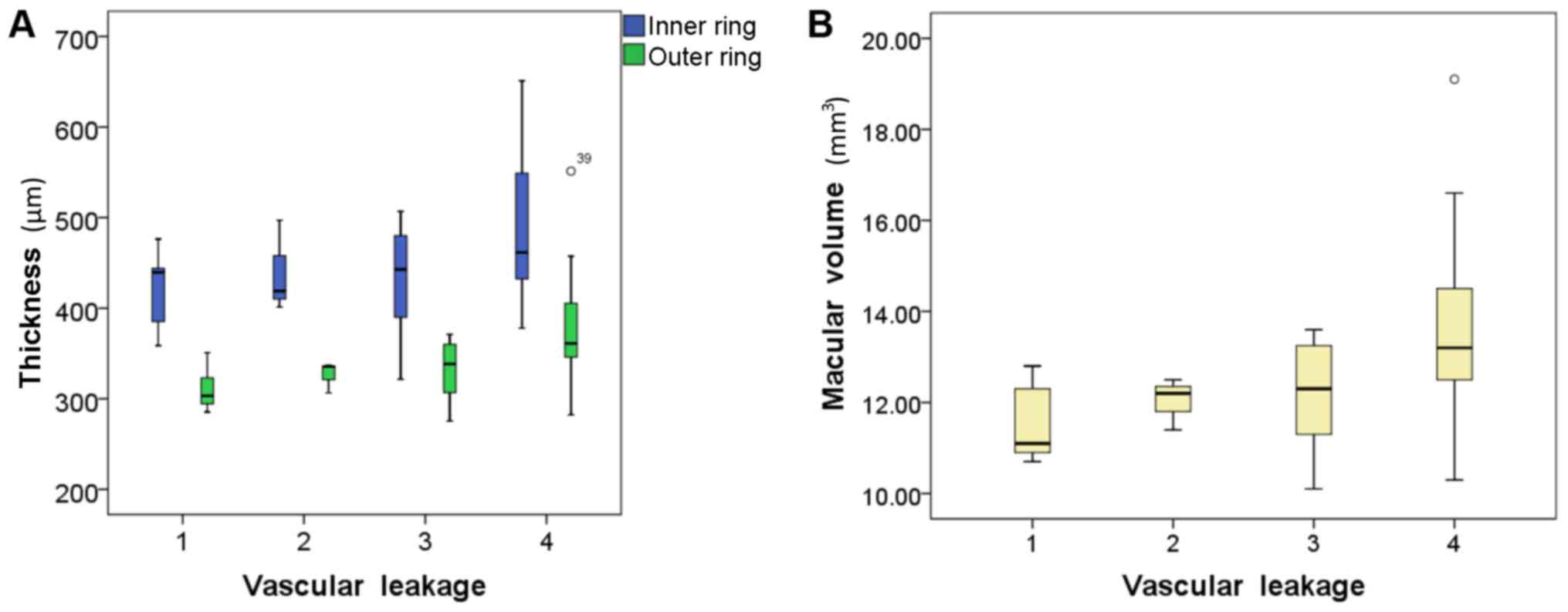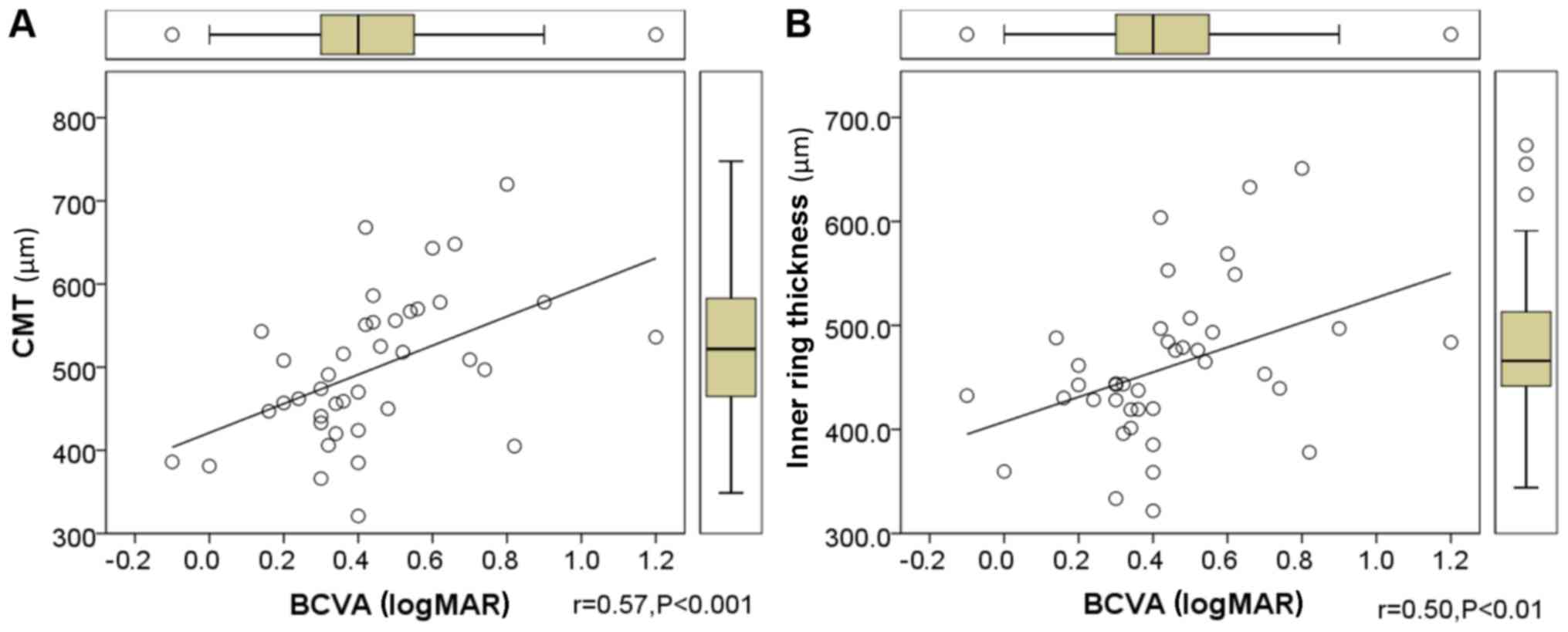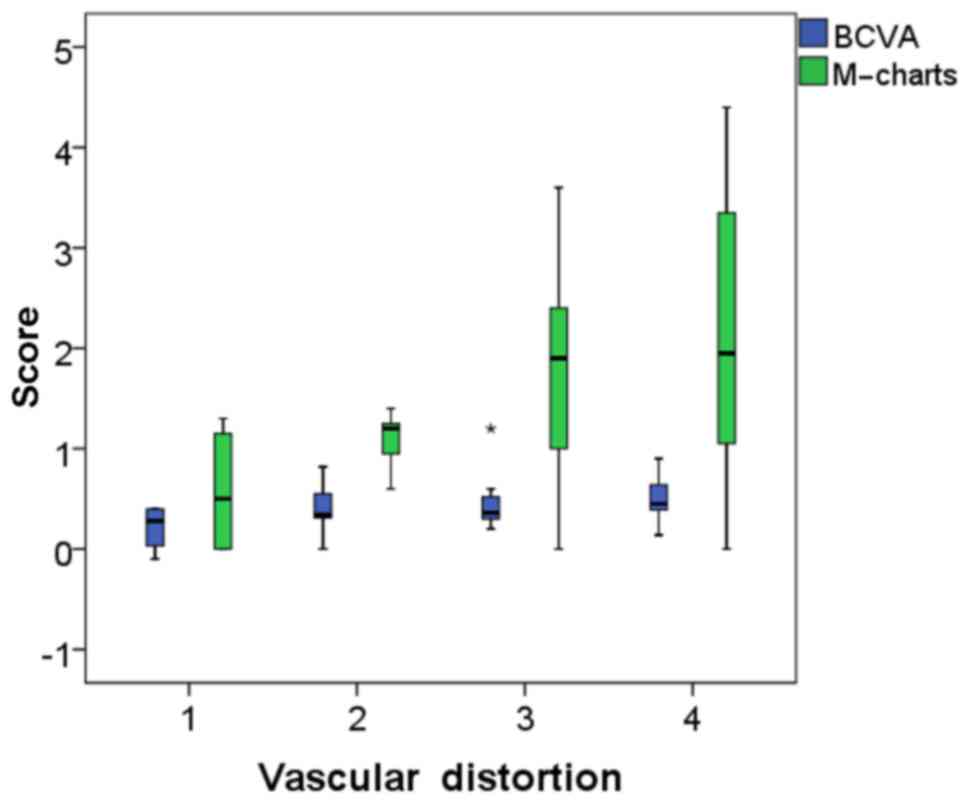|
1
|
Pearlstone AD: The incidence of idiopathic
preretinal macular gliosis. Ann Ophthalmol. 17:378–380.
1985.PubMed/NCBI
|
|
2
|
Michels RG: A clinical and histopathologic
study of epiretinal membranes affecting the macula and removed by
vitreous surgery. Trans Am Ophthalmol Soc. 80:580–656.
1982.PubMed/NCBI
|
|
3
|
Schmitz-Valckenberg S, Holz FG, Bird AC
and Spaide RF: Fundus autofluorescence imaging: Review and
perspectives. Retina. 28:385–409. 2008. View Article : Google Scholar : PubMed/NCBI
|
|
4
|
Dell'omo R, Cifariello F, Dell'omo E, De
Lena A, Di Iorio R, Filippelli M and Costagliola C: Influence of
retinal vessel printings on metamorphopsia and retinal
architectural abnormalities in eyes with idiopathic macular
epiretinal membrane. Invest Ophthalmol Vis Sci. 54:7803–7811. 2013.
View Article : Google Scholar : PubMed/NCBI
|
|
5
|
Niwa T, Terasaki H, Kondo M, Piao CH,
Suzuki T and Miyake Y: Function and morphology of macula before and
after removal of idiopathic epiretinal membrane. Invest Ophthalmol
Vis Sci. 44:1652–1656. 2003. View Article : Google Scholar : PubMed/NCBI
|
|
6
|
Weinberger D, Stiebel-Kalish H, Priel E,
Barash D, Axer-Siegel R and Yassur Y: Digital red-free photography
for the evaluation of retinal blood vessel displacement in
epiretinal membrane. Ophthalmology. 106:1380–1383. 1999. View Article : Google Scholar : PubMed/NCBI
|
|
7
|
Klein BR, Hiner CJ, Glaser BM, Murphy RP,
Sjaarda RN and Thompson JT: Fundus photographic and fluorescein
angiographic characteristics of pseudoholes of the macula in eyes
with epiretinal membranes. Ophthalmology. 102:768–774. 1995.
View Article : Google Scholar : PubMed/NCBI
|
|
8
|
Kadonosono K, Itoh N, Nomura E and Ohno S:
Capillary blood flow velocity in patients with idiopathic
epiretinal membranes. Retina. 19:536–539. 1999. View Article : Google Scholar : PubMed/NCBI
|
|
9
|
Maguire AM, Margherio RR and Dmuchowski C:
Preoperative fluorescein angiographic features of surgically
removed idiopathic epiretinal membranes. Retina. 14:411–416. 1994.
View Article : Google Scholar : PubMed/NCBI
|
|
10
|
Bailey IL and Lovie-Kitchin JE: Vision
acuity testing. From the laboratory to the clinic. Vision Res.
90:2–9. 2013. View Article : Google Scholar : PubMed/NCBI
|
|
11
|
Matsumoto C, Arimura E, Okuyama S, Takada
S, Hashimoto S and Shimomura Y: Quantification of metamorphopsia in
patients with epiretinal membranes. Invest Ophthalmol Vis Sci.
44:4012–4016. 2003. View Article : Google Scholar : PubMed/NCBI
|
|
12
|
Arimura E, Matsumoto C, Nomoto H,
Hashimoto S, Takada S, Okuyama S and Shimomura Y: Correlations
between M-CHARTS and PHP findings and subjective perception of
metamorphopsia in patients with macular diseases. Invest Ophthalmol
Vis Sci. 52:128–135. 2011. View Article : Google Scholar : PubMed/NCBI
|
|
13
|
Zhao F, Gandorfer A, Haritoglou C, Scheler
R, Schaumberger MM, Kampik A and Schumann RG: Epiretinal cell
proliferation in macular pucker and vitreomacular traction
syndrome: Analysis of flat-mounted internal limiting membrane
specimens. Retina. 33:77–88. 2013. View Article : Google Scholar : PubMed/NCBI
|
|
14
|
Wilkins JR, Puliafito CA, Hee MR, Duker
JS, Reichel E, Coker JG, Schuman JS, Swanson EA and Fujimoto JG:
Characterization of epiretinal membranes using optical coherence
tomography. Ophthalmology. 103:2142–2151. 1996. View Article : Google Scholar : PubMed/NCBI
|
|
15
|
Massin P, Allouch C, Haouchine B, Metge F,
Paques M, Tangui L, Erginay A and Gaudric A: Optical coherence
tomography of idiopathic macular epiretinal membranes before and
after surgery. Am J Ophthalmol. 130:732–739. 2000. View Article : Google Scholar : PubMed/NCBI
|
|
16
|
Arichika S, Hangai M and Yoshimura N:
Correlation between thickening of the inner and outer retina and
visual acuity in patients with epiretinal membrane. Retina.
30:503–508. 2010. View Article : Google Scholar : PubMed/NCBI
|
|
17
|
Michalewski J, Michalewska Z, Cisiecki S
and Nawrocki J: Morphologically functional correlations of macular
pathology connected with epiretinal membrane formation in spectral
optical coherence tomography (SOCT). Graefes Arch Clin Exp
Ophthalmol. 245:1623–1631. 2007. View Article : Google Scholar : PubMed/NCBI
|
|
18
|
Theodossiadis PG, Grigoropoulos VG,
Kyriaki T, Emfietzoglou J, Vergados J, Nikolaidis P and
Theodossiadis GP: Evolution of idiopathic epiretinal membrane
studied by optical coherence tomography. Eur J Ophthalmol.
18:980–988. 2008.PubMed/NCBI
|
|
19
|
Pilli S, Lim P, Zawadzki RJ, Choi SS,
Werner JS and Park SS: Fourier-domain optical coherence tomography
of eyes with idiopathic epiretinal membrane: Correlation between
macular morphology and visual function. Eye (Lond). 25:775–783.
2011. View Article : Google Scholar : PubMed/NCBI
|
|
20
|
Gass JDM: Stereoscopic Atlas Of Macular
Diseases: Diagnosis And Treatment. 3rd edition. CV Mosby, St.
Louis, MO: 1997
|
|
21
|
Falkner-Radler CI, Glittenberg C, Hagen S,
Benesch T and Binder S: Spectral-domain optical coherence
tomography for monitoring epiretinal membrane surgery.
Ophthalmology. 117:798–805. 2010. View Article : Google Scholar : PubMed/NCBI
|
|
22
|
Inoue M, Morita S, Watanabe Y, Kaneko T,
Yamane S, Kobayashi S, Arakawa A and Kadonosono K: Inner
segment/outer segment junction assessed by spectral-domain optical
coherence tomography in patients with idiopathic epiretinal
membrane. Am J Ophthalmol. 150:834–839. 2010. View Article : Google Scholar : PubMed/NCBI
|
|
23
|
Shiono A, Kogo J, Klose G, Takeda H, Ueno
H, Tokuda N, Inoue J, Matsuzawa A, Kayama N, Ueno S and Takagi H:
Photoreceptor outer segment length: A prognostic factor for
idiopathic epiretinal membrane surgery. Ophthalmology. 120:788–794.
2013. View Article : Google Scholar : PubMed/NCBI
|
|
24
|
Arimura E, Matsumoto C, Okuyama S, Takada
S, Hashimoto S and Shimomura Y: Retinal contraction and
metamorphopsia scores in eyes with idiopathic epiretinal membrane.
Invest Ophthalmol Vis Sci. 46:2961–2966. 2005. View Article : Google Scholar : PubMed/NCBI
|
|
25
|
Okamoto F, Sugiura Y, Okamoto Y, Hiraoka T
and Oshika T: Associations between metamorphopsia and foveal
microstructure in patients with epiretinal membrane. Invest
Ophthalmol Vis Sci. 53:6770–6775. 2012. View Article : Google Scholar : PubMed/NCBI
|
|
26
|
Watanabe A, Arimoto S and Nishi O:
Correlation between metamorphopsia and epiretinal membrane optical
coherence tomography findings. Ophthalmology. 116:1788–1793. 2009.
View Article : Google Scholar : PubMed/NCBI
|















